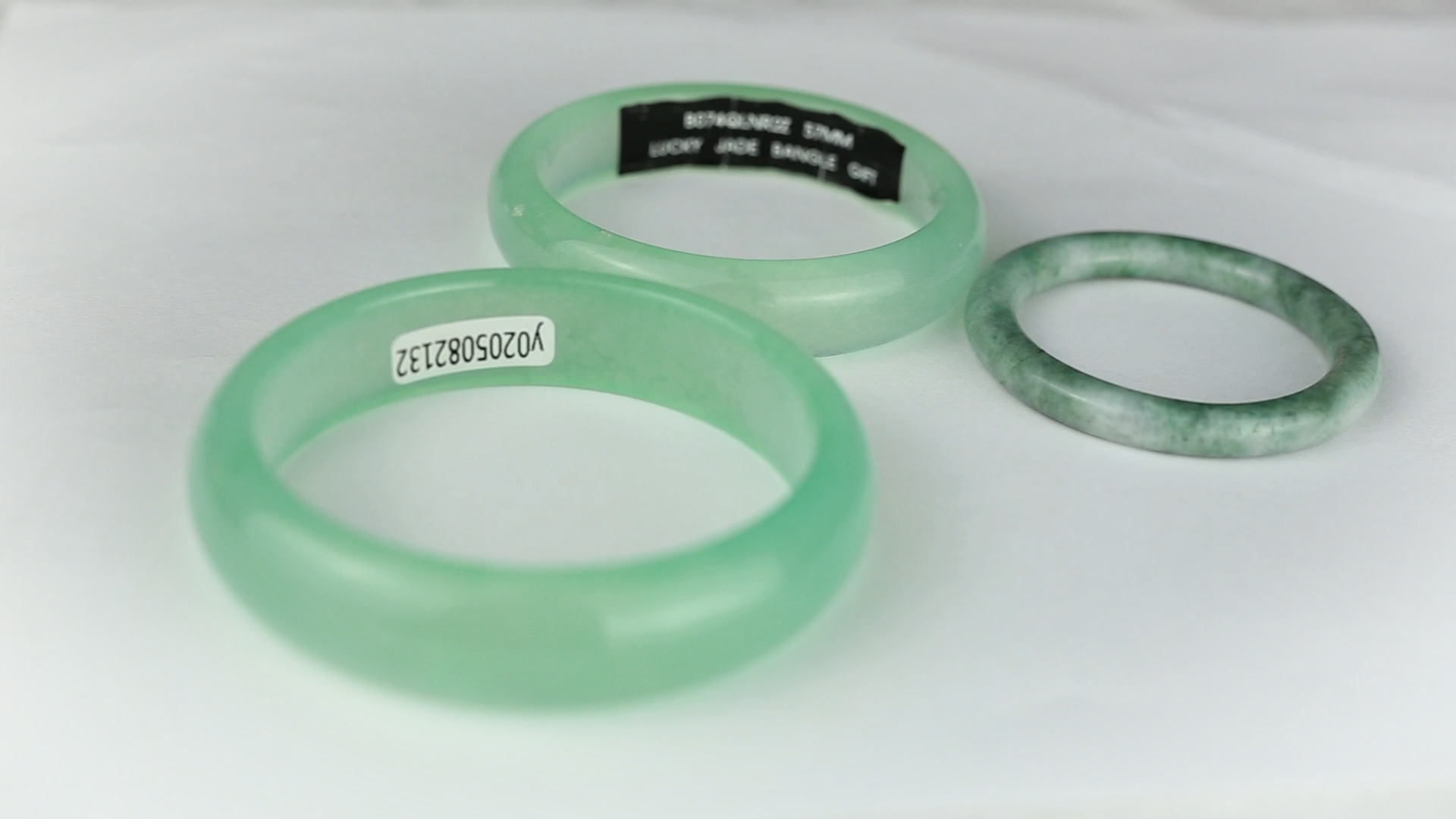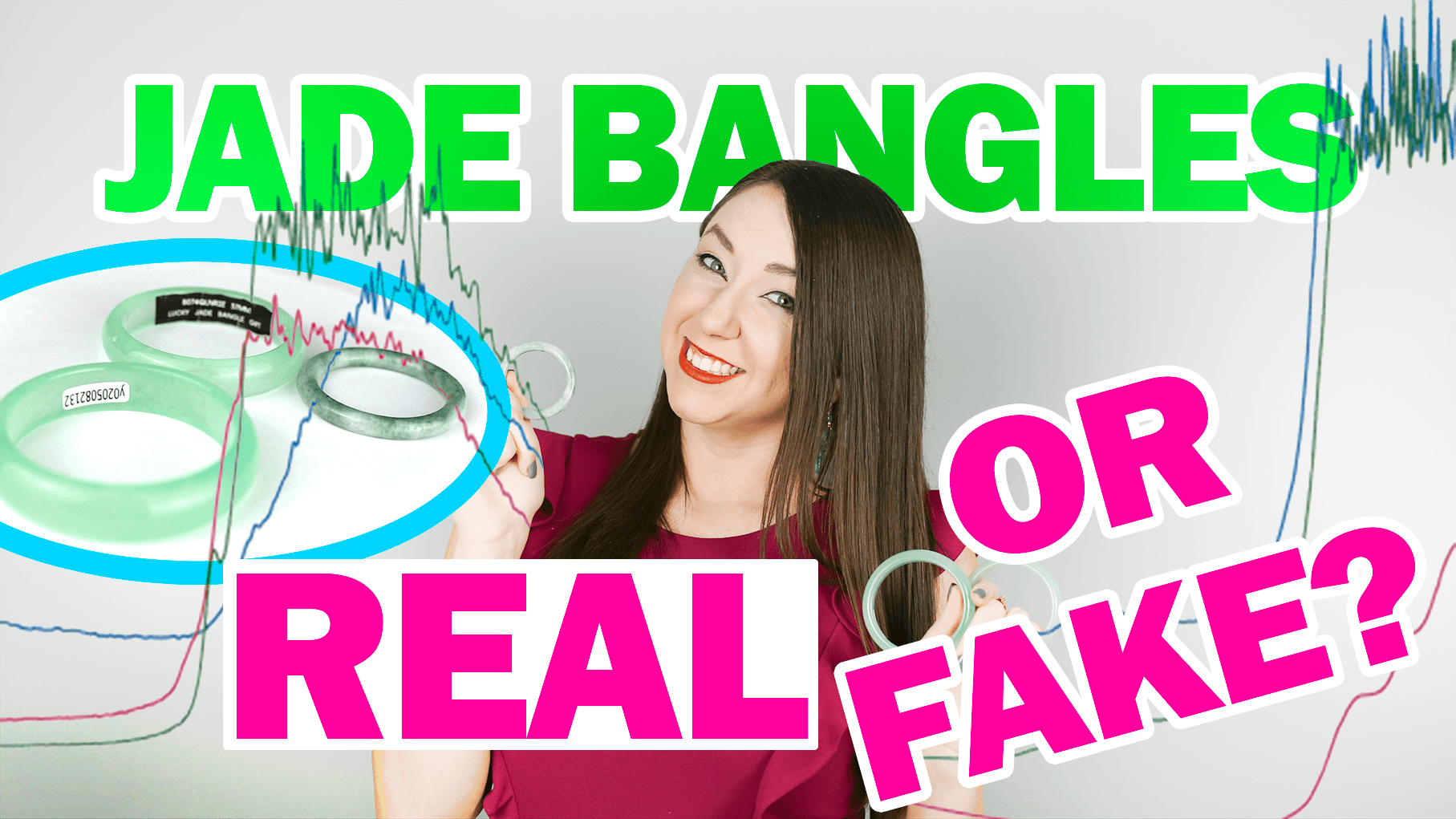
Products Featured
Is the Dentang Bangle on Amazon REAL Jade?
Is the MPH Jewellery Bangle on Amazon REAL Jade? Is the KaratGem Bangle on Amazon REAL Jade?
***Where to buy actual NATURAL jade***
https://www.masonkay.com/ For retail customers: https://www.mkjadejewelry.com/ For jewelry stores: https://masonkayshowroom.com/
***For More Info***
Are Jade Rollers Made From REAL Jade? https://www.youtube.com/watch?v=smcQW…
Video Transcript
Authentic, guaranteed natural jade bangles in appealing colors and qualities sell appropriately for $600, $1,000, $2,000 and easily into the tens of thousands of dollars for fine quality with desirable color and translucence.
So why are so many “natural” jade bangles online $10, $50 and $100?
Why the price difference? Why are some so cheap and others so expensive?
The answer may be that some of these “affordable” bangles Aren’t. Really. Jade.
Today, we’re going to get to the bottom of this and find out which of these bangles are and which are not actually natural jade as advertised.
Before we get started, thank you so much for watching. If you’re new here, this channel is dedicated to spreading accurate information about jewelry and gemstones so please consider subscribing to our channel. Give this video a “like” if it helps you, and before we get started, answer this question for me in the comments: Is having natural gemstones important to you or are you also interested in treated stones, lab-created gems and simulants? There is no wrong answer! I just want to hear what you have to say.
In this video, we’re going to show actual gemological testing of jade bangles from Jade Expert Jeff Mason of Mason-Kay Jade in Colorado.
The types of tests typically used for determining the authenticity of jade are
Refractometry and Spectroscopy
Refractometry can help us determine if a stone is jade or another gemstone entirely, which I talk more about in my video “Are Jade Rollers Made from REAL Jade?”
And Spectroscopy can reveal if jade is natural and untreated or has been impregnated with polymer or resin.
Let’s start with the DNTENG bangle from Amazon labeled “Chinese Natural Jadeite Jade” for $22.49.
This “jade bangle” comes with a “cert,” which from experience I know means nothing. Only trust gem reports from reputable companies such as AGL, GIA, Mason-Kay Jade and other labs your local jeweler may recommend.
So looking at the bangle, this piece is gorgeous and very gummy/translucent. The #1 indicator that this isn’t natural jade is it’s appearance, as a natural jade bangle of this translucence would be much, much, MUCH more expensive than $20. But. We are gemologists, and we test to know best.
Here is Jeff Mason spot testing the DNTENG bangle using a refractometer.
Jeff: “Not jade. No question, a clear quartz reading.”
Quartz!
This explains the low price point as quartz is quite abundant and inexpensive.
Lots of people turn to the Internet when trying to determine if jade is real or not. Unfortunately, almost all the advice I’ve seen pop up on a quick search is completely unreliable and sometimes downright wrong. I know I’m a random person on the Internet, but please believe me when I say not to trust random people on the Internet. As I’ve mentioned before in other videos, if you have any questions about natural jade you can always ask your local jeweler or the jade experts at Mason-Kay Jade.
Let’s talk about some of the “indicators” the Internet touts as reliable that actually aren’t reliable at all:
#1. The scratch test. It is true that if you take a steel knife to jade, the jade won’t scratch because the jade is harder or more resistant to scratching than the knife. However, many jade simulants are also harder than steel. Therefore, the resultant lack of a scratch is not a conclusive indicator. What if it’s jade and it scratches? That would bring into question the material it was scratched with, which may be another material harder than jade or even have quartz dust or some other dust of a gem harder than jade on it.
#2. The cold test. I’ve even heard some ignorant jewelry professionals say that if you pick up a stone in question and it’s cold, then it’s jade. This is moronic. Lots of gemstones are cold. “Cold” is relative. Just think about it for like two seconds.
#3. The break test. Interestingly enough, the Internet says if you drop your jade bangle or jade roller and it breaks, then it’s probably jade. And if it doesn’t break, then it probably isn’t jade. This is hilarious because nephrite and jadeite are the two toughest (meaning hardest to break) gemstones on the planet. I’m not saying they won’t break if you drop them, they totally can. But. Come on. I’m curious about this, so I am going to drop all 3 of our jade bangles in question today, just for fun.
We have to drop each bangle from the same height onto the same surface so I’m just going to drop them from chest height onto the sidewalk.
Fake Jade Bangle from Amazon #1 broke upon hitting the sidewalk.
Moving on to bangle #2. This one looks almost the same as the first one. It is called “Jadeite Jade Bangle” on Amazon and sells for $99.99. Yes, it’s more expensive than the first one, but the price is still low enough for this type of translucent appearance that it’s probably a fake. Let’s find out what it is!
Here is Jeff testing this bangle with a refractometer.
Jeff: “Quartz.”
And here is Jeff testing that same bangle for the presence of a polymer with FTIR, or infrared spectroscopy.
Jeff: “We’re finding more impregnation in quartz.”
I wonder if this impregnated quartz bangle will survive the break test.
Fake Jade Bangle from Amazon #2 broke upon hitting the sidewalk.
On to the 3rd and final bangle. This bangle from KaratGem is called “Natural Jadeite Jade Round Bangle” and sells on Amazon for $94.99. This is opaque, it’s teeny tiny. What do you think? Do you think this is jade? It’s so small!
Jeff: “jadeite jade”
So I was a little surprised since it came from Amazon, but refractometry showed that it’s jadeite. Is it natural jadeite though? Some jade is acid-bleached and impregnated with polymer or resin which we call ‘B Jade’ which is often not disclosed. We test for this presence of polymer using Spectroscopy, and it’s very important to know because ‘B Jade’ is valued at about 5-10% the value of Natural ‘A Jade,’ which is not a quality grade, it just means it’s untreated. If jade is dyed, it’s value is EVEN LOWER.
We test to see if jade is dyed first because regardless of polymer, dyed jade has little to no value. Here is Jeff Mason testing this jade bangle for dye. He’s shining a light through the stone to find a dye line.
Jeff: “Not a dye line.”
Next, Jeff is going to use his spectroscope to see if there is any polymer or resin in the jade.
Jeff “If I had to make a call, I’d say it’s natural.
WHAT?! Amazon sold a piece of jade that was actually jade? I am shocked.
Now let’s drop it and find out if it breaks!
Real jade bangle from Amazon did break upon hitting the sidewalk, possibly due to pre-existing internal fracturing.
There you have it! If you are interested in buying any of these bangles, I’m including links below. If you would like a natural jade bangle that is adult-sized and guaranteed untreated and beautiful, ask your local jeweler about Mason-Kay Jade. You can buy natural jade from your local, independent jewelry store or order it from Mason-Kay directly but be warned — choosing a bangle is tricky and getting the size right really warrants help from your local jewelry store so please go and see them!
Thanks so much for watching my video, check out the links in the description and don’t forget to subscribe!

